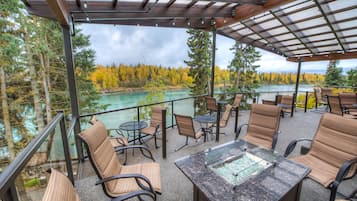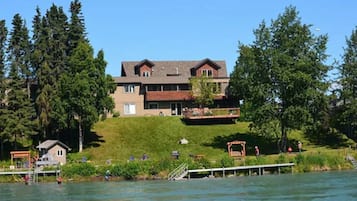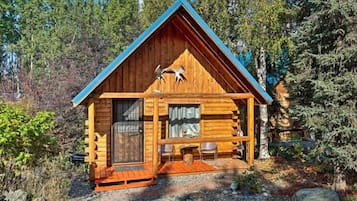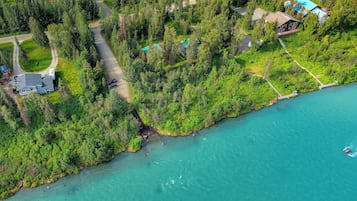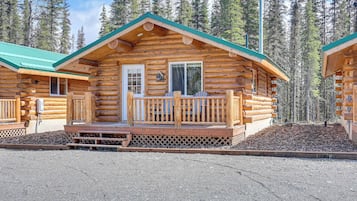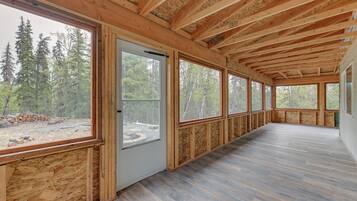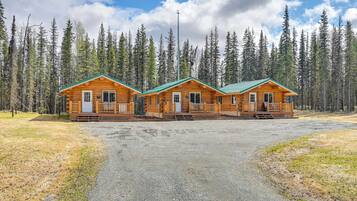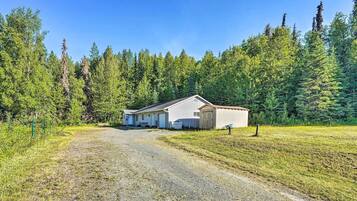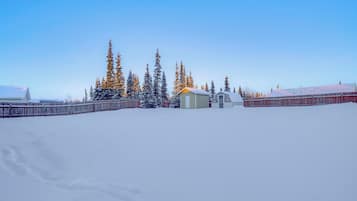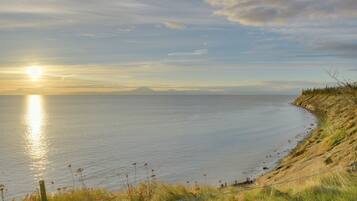Photo by Sharrie Shaw
Nikiski Hotel Guide - 3 Stars Hotels in Nikiski, Kenai
- Change your mindBook hotels with free cancellation
- Be pickySearch almost a million properties worldwide
Check availability on Nikiski 3 Star Hotels
Top Nikiski 3 Star Hotels

Kenai River Lodge
Soldotna
8.4 out of 10, Very good, (741)
The price is Rp2.003.880
Rp2.204.268 total
includes taxes & fees
28 Nov - 29 Nov

Alaska Angler's Inn
Soldotna
8.0 out of 10, Very good, (299)

Southern Bluff B&B
Soldotna
10.0 out of 10, Exceptional, (46)

Spacious Kenai Vacation Rental w/ Lake Access!
Kenai
10.0 out of 10, Exceptional, (1)

Joy's Kenai River Cabins
Sterling
10.0 out of 10, Exceptional, (3)

Woodsy Cabin Near Kenai River: Great for Anglers!
Soldotna

Kenai Home w/ Fireplace < 10 Mi to Big Eddy!
Kenai
10.0 out of 10, Exceptional, (2)

Lovely Soldotna Home, Steps From Kenai River
Soldotna
10.0 out of 10, Exceptional, (2)
Save an average of 15% on thousands of hotels when you're signed in
Explore similar 4-star hotels
Many 4-star hotels have the same amenities as 3-star hotels. See all 4-star hotels in Nikiski.

ALASKA LAKE and LODGE AT LONGMERE
38780 Longmere Way Soldotna AK
The price is Rp3.045.731 per night from 27 Nov to 28 Nov
Rp3.045.731
Rp3.137.074 total
27 Nov - 28 Nov
includes taxes & fees
8.2/10 Very Good! (26 reviews)
Still don't see what you're looking for?
See all properties in Nikiski.
You can also use these popular filters to refine your search.
Lowest nightly price found within the past 24 hours based on a 1 night stay for 2 adults. Prices and availability subject to change. Additional terms may apply.
Learn more about Nikiski
Explore secluded Nikiski: its canoeing, water parks, camping and more!
![The Arctic Circle is one of the five major circles of latitude that mark maps of the Earth. As of 16 February 2015, it runs 66°33′45.6″ north of the Equator.
The region north of this circle is known as the Arctic, and the zone just to the south is called the Northern Temperate Zone. The equivalent polar circle in the Southern Hemisphere is called the Antarctic Circle.
The Arctic Circle is the southernmost latitude in the Northern Hemisphere at which the sun can remain continuously above or below the horizon for 24 hours (at the June solstice and December solstice respectively). North of the Arctic Circle, the sun is above the horizon for 24 continuous hours at least once per year (and therefore visible at midnight) and below the horizon for 24 continuous hours at least once per year (and therefore not visible at noon). On the Arctic Circle those events occur, in principle, exactly once per year, at the June and December solstices, respectively. However, in practice, because of atmospheric refraction and mirages, and because the sun appears as a disk and not a point, part of the midnight sun may be seen on the night of the northern summer solstice up to about 50′ (90 km (56 mi)) south of the Arctic Circle; similarly, on the day of the northern winter solstice, part of the sun may be seen up to about 50′ north of the Arctic Circle. That is true at sea level; those limits increase with elevation above sea level, although in mountainous regions there is often no direct view of the true horizon.
The position of the Arctic Circle is not fixed. It directly depends on the Earth's axial tilt, which fluctuates within a margin of 2° over a 40,000-year period,[2] notably due to tidal forces resulting from the orbit of the Moon. The Arctic Circle is currently drifting northwards at a speed of about 15 m (49 ft) per year; see Circle of latitude for more information.
#snow](https://images.trvl-media.com/place/6140564/a9f9449e-bab4-40a6-a9a1-5356b0cc2aa8.jpg?impolicy=fcrop&w=900&h=675&p=1&q=high)
Photo by Sharrie Shaw
Open Photo by Sharrie Shaw
![The Arctic Circle is one of the five major circles of latitude that mark maps of the Earth. As of 16 February 2015, it runs 66°33′45.6″ north of the Equator.
The region north of this circle is known as the Arctic, and the zone just to the south is called the Northern Temperate Zone. The equivalent polar circle in the Southern Hemisphere is called the Antarctic Circle.
The Arctic Circle is the southernmost latitude in the Northern Hemisphere at which the sun can remain continuously above or below the horizon for 24 hours (at the June solstice and December solstice respectively). North of the Arctic Circle, the sun is above the horizon for 24 continuous hours at least once per year (and therefore visible at midnight) and below the horizon for 24 continuous hours at least once per year (and therefore not visible at noon). On the Arctic Circle those events occur, in principle, exactly once per year, at the June and December solstices, respectively. However, in practice, because of atmospheric refraction and mirages, and because the sun appears as a disk and not a point, part of the midnight sun may be seen on the night of the northern summer solstice up to about 50′ (90 km (56 mi)) south of the Arctic Circle; similarly, on the day of the northern winter solstice, part of the sun may be seen up to about 50′ north of the Arctic Circle. That is true at sea level; those limits increase with elevation above sea level, although in mountainous regions there is often no direct view of the true horizon.
The position of the Arctic Circle is not fixed. It directly depends on the Earth's axial tilt, which fluctuates within a margin of 2° over a 40,000-year period,[2] notably due to tidal forces resulting from the orbit of the Moon. The Arctic Circle is currently drifting northwards at a speed of about 15 m (49 ft) per year; see Circle of latitude for more information.
#snow](https://images.trvl-media.com/place/6140564/a9f9449e-bab4-40a6-a9a1-5356b0cc2aa8.jpg?impolicy=fcrop&w=1200&h=500&q=medium)
